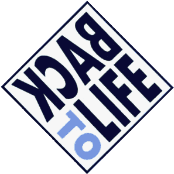Compliance in resuscitation & medical emergencies in a Dental Practice
Dental practices are expected to comply with quality standards relating to training, equipment and drugs for resuscitation and managing medical emergencies. The information below should help practices comply and ensure they are meeting all their requirements.
The General Dental Council (GDC)
The GDC expect practices to meet the standards set by the Resuscitation Council (UK).
The GDC scope of practice states “A patient could collapse on any premises at any time, whether they have received treatment or not. It is therefore essential that ALL registrants are trained in dealing with medical emergencies, including resuscitation, and possess up to date evidence of capability”.
The GDC also requires all registrants to have evidence of a minimum of 10 hours of verifiable CPD in managing emergencies and resuscitation in each registration period.
The Resuscitation Council (UK)
The Resuscitation Council UK issued quality standards for Dental practices in November 2013 that sets out the minimum standards expected for training and equipment in general dental practices.
The Summary of these guidelines state:
- There is a public expectation that dental practitioners and all other dental care professionals should be competent in treating cardiorespiratory arrest.
- All primary care dental facilities should have a process for medical risk-assessment of their patients.
- Specific resuscitation equipment should be available immediately in all primary care dental premises. This equipment list should be standardised throughout the UK.
- All clinical areas should have immediate access to an automated external defibrillator (AED).
- Primary dental care providers, general dental practitioners and all other dental healthcare professionals should undergo training in cardiopulmonary resuscitation (CPR) including basic airway management and the use of an AED.
- Each primary dental care facility should have a plan for summoning assistance in the event of a cardiorespiratory arrest. For most practices this will mean calling 999 immediately.
- There should be regular practice and teaching using simulation-based cardiorespiratory arrest scenarios.
- Dental staff’s knowledge and skills in resuscitation should be updated at least annually.
If the practice undertakes treatments such as sedation then there would be additional resuscitation training and equipment required.
In addition to the above, the RC(UK) also has a Suggested Minimum Equipment List, consisting of:
|
Item (click for online store) |
Suggested Availability |
Comments |
|---|---|---|
|
Protective equipment - gloves, aprons, eye protection |
Immediate |
|
|
Pocket mask with oxygen port |
Immediate |
|
|
Portable suction e.g. Yankauer |
Immediate |
Airway suction equipment. NPSA Signal. Reference number 1309. February 2011 |
|
Oropharyngeal airways (sizes 0,1,2,3,4) |
Immediate |
|
|
Self-inflating bag with reservoir (adult) |
Immediate |
|
|
Self-inflating bag with reservoir (child) |
Immediate |
|
|
Clear face masks for self-inflating bag (sizes 0,1,2,3,4) |
Immediate |
|
|
Oxygen cylinder (CD size) |
Immediate |
|
|
Oxygen masks with reservoir |
Immediate |
|
|
Oxygen tubing |
Immediate |
|
|
Automated external defibrillator (AED) |
Immediate |
Type of AED and location determined by a local risk assessment. |
|
Adhesive defibrillator pads |
Immediate |
Spare set of pads also recommended. |
|
Razor |
Immediate |
|
|
Scissors |
Immediate |
Defibrillators
All dental practices are now expected to have an automated external defibrillator.
The Resuscitation Council have recommended that defibrillators with CPR performance feedback are a good option, particularly for environments that do not have to perform CPR regularly. Constant feedback on rate and depth during an arrest helps maintain high quality CPR, which has a huge impact on positive outcomes in resuscitation attempts.
Oxygen
Oxygen cylinders should be able to provide high flow rates of 15 litres/ minute and should be able to provide 30 minutes of emergency oxygen. Most small portable cylinders contain around 340 litres of oxygen and therefore should be kept full at all times. If they are partially used they should be refilled immediately. Practice should make provision for when their cylinders are away being refilled.
It should be noted that these are minimum standards and practices may choose to keep additional monitoring equipment that will assist them in making decisions about the severity of medical emergency such as pulse oximeters, blood pressure monitors, blood glucose monitors and thermometer. Drug kits should also contain any ancillary equipment required for the administration of the drugs and should include needles, syringes, large volume spacer and additional items such as sharps box, swabs, gloves.
The Care Quality Commission (CQC)
The CQC, like the GDC, refers to the Resuscitation Council Standards documents linked to previously.
The CQC’s own Regulation 12 also refers to the standards the CQC expect from practices.
There should be documented evidence of checking procedures that ensure all emergency drugs and equipment with a limited shelf life are within their expiry date. It is suggested that this is done weekly.
The Royal College of Surgeons (Conscious Sedation)
Practitioners must be able to provide age-appropriate immediate life support as defined by the main elements of the Resuscitation Council (UK) ILS and PILS training programmes. It is not essential to undertake a Resuscitation Council (UK) accredited ILS/PILS course. Alternative courses with equivalent content which are adapted to the needs of dental practice are acceptable: these might also include the management of common sedation, medical and dental emergencies.
Debriefing and evidence of reflective practice
Following any medical emergency or resuscitation attempt there should be documented evidence that the practice has debriefed and reflected on the incident. There should be evidence that any action points from the debrief have been addressed. This documentation should be available for CQC inspections as evidence of improvements in care.
References & Further Reading
- https://www.gdc-uk.org/Dentalprofessionals/Standards/Pages/medicalemergencies.aspx
- http://www.gdcuk.org/Dentalprofessionals/Standards/Documents/Scope%20of%20Practice%20September%202013%20(3).pdf
- https://www.resus.org.uk/quality-standards/primary-dental-care-quality-standards-for-cpr-and-training/
- https://www.rcseng.ac.uk/library-and-publications/college-publications/docs/dental-sedation-report/
- https://www.resus.org.uk/quality-standards/primary-dental-care-equipment-list/
- http://www.cqc.org.uk/content/dental-mythbuster-4-drugs-and-equipment-required-medical-emergency
- http://www.cqc.org.uk/content/regulation-12-safe-care-and-treatment
- https://www.rcseng.ac.uk/dental-faculties/fds/publications-guidelines/standards-for-conscious-sedation-in-the-provision-of-dental-care-and-accreditation/faq/#IACSD-life-support-level
